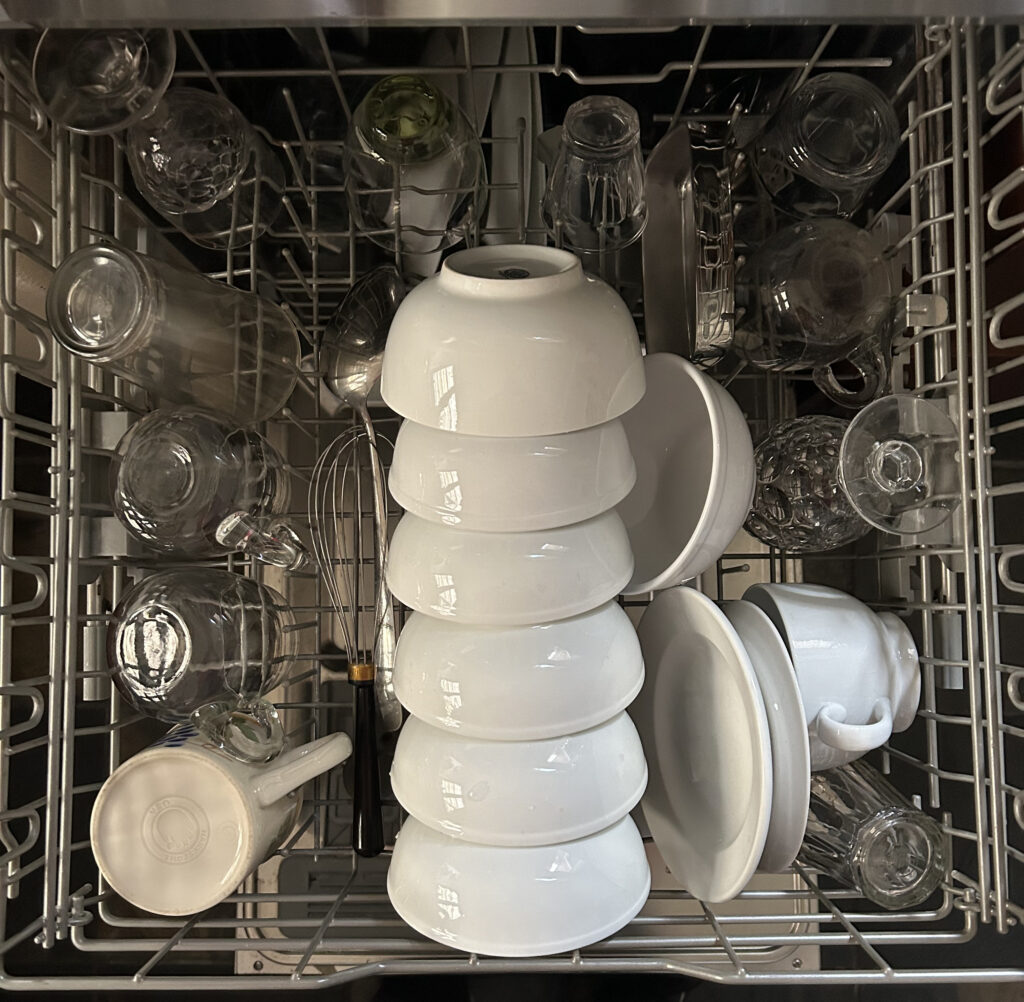
The Pieces: Dirty cups, bowls, plates, platters, glasses, knives, forks, and spoons; an assortment of shapes of varying sizes that need to fill the rack space of the dishwasher. The Goal: Fit as many dirty dishes and utensils as possible in a fixed amount of space; the more you fit the more you win! It’s what I call Dishwasher Chess.
If you live in a home with someone else, or perhaps several others, and visitors come around – children, grandchildren, spouses, siblings, even friends – you’ve likely played Dishwasher Chess. The others may not realize you’re playing; you can tell by the way they load their dishes. Dish chaos is sure sign of that.
For example, finding cereal bowls where the cups are supposed to be, or drinking glasses in the plate slots. These are the sure signs of an amateur. The chess master, on the other hand, places each item to maximize the potential of the number of total items placed in the machine. For example, there’s the small saucer gambit: back-to-back in the gap between the bowl holders and the spot for cups and glasses.
IQ tests routinely include arranging geometric shapes in alignment with each other. The easier one can place the colored shapes in ways that create a specific larger shape, in other words, good spatial awareness, is the determining factor. Admittedly, such ability may instead be a strong indicator of obsessive-compulsive disorder.
The idea that certain objects should occupy certain places dictates the way we human beings spend a great deal of our time. In more clinical terms, it’s called moving matter, and we spend most of our lives doing it. According to neuroscientists, our grasping nature – for right-handed people it’s the function of the left-brain hemisphere – is behaviorally dominant; while we are babies we begin to grasp and move matter, and this activity continues until we die.
In this way, we play chess every day, moving pieces around until they are in a configuration that feels like a winning arrangement, or produce a sense of rightness. We hang hats and don’t place them on the floor. We never put shoes on the kitchen table. Foods that can spoil are placed in the refrigerator; canned goods go in the cupboard. Although there are chaotic slobs among us, even a slob knows what goes into the toilet.
Where we put our money, when we have any, occupies a great deal of our attention. It’s not altogether different than where we put our dirty dishes. Both are about currency: how it moves and how its force interacts with objects in it path.
Game theory was very popular for a time. The 1964 book, “Games People Play,” by Eric Byrne, listed numerous psychological “games,” their rules and dynamics. His point, still relevant today, is that human beings thrive on manipulating things: roles, ideas and material objects. Psychiatrist, Ian McGilchrist agrees. The left hemisphere of our brain, he avers, is a hemisphere of grasping. The world thus becomes filled with things we grasp and manipulate, practically and aesthetically.
I often rearrange the way dishes have been placed in the dishwasher. My self-imposed rule of Dishwasher Chess is that I am not allowed to remove any object from the dishwasher and can only rearrange and add to the things that are in it. Bonus points are awarded for creating space for more dishes, the mark of a grand master. Checkmate!
Larry playing 3-D dishwasher chess. Keeping things interesting. Well done!
I had my dishwasher removed many years ago. Guess I just like watching soap bubbles. However, I play a similar game with artworks on my walls and furniture on the floors. It’s a fun and interesting challenge.